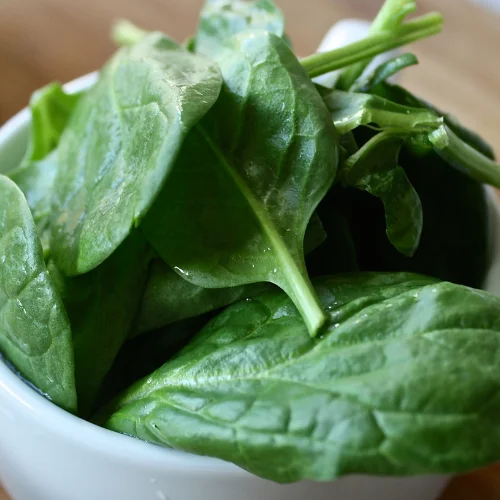10 Easy Meals for Dementia Patients: Delicious Nourishment Made Simple
Let’s talk about something very important: providing easy and nutritious meals for our loved ones with dementia. Caring for someone with dementia can be challenging, but ensuring they have a healthy diet shouldn’t be. In this blog post, I want to share with you 10 simple and tasty meal ideas that will help support their well-being and bring joy to their dining experience. So, let’s dive right in!
Here Are the 10 Easy Meals for Dementia Patients
1. Smoothies and Shakes: Nutrient-Packed Sips of Goodness

When appetite is a challenge, smoothies and shakes can be a lifesaver. Packed with fruits, vegetables, and even protein, they offer a convenient and delicious way to provide essential nutrients. Consider blending a banana, a handful of berries, yogurt, and a splash of milk for a refreshing and nourishing smoothie. You can even experiment with adding a spoonful of peanut butter for some extra protein and healthy fats.
2. Comforting Soups: Warmth and Wholesomeness

Soups are not only easy to prepare but also incredibly comforting for those with dementia. Opt for simple recipes like tomato soup or chicken noodle soup. The aroma and familiarity of these classics can evoke happy memories and increase the likelihood of your loved one enjoying their meal. Serve with some whole-grain bread for added texture and satisfaction.
3. One-Pot Meals: Simplicity at Its Best

One-pot meals are a boon for caregivers, as they minimize both cooking time and clean-up. Consider dishes like chili, vegetable stew, or pasta primavera. These meals can be packed with a variety of colorful vegetables, lean proteins, and whole grains to provide a well-rounded nutritional punch. Plus, they can be easily customized to suit individual preferences and dietary restrictions.
4. Finger Foods: Fun and Easy Eating

For individuals with dementia, eating with their hands can be more enjoyable and less daunting than using utensils. Prepare finger foods like bite-sized sandwiches, fruit kebabs, or cheese cubes. This approach not only adds an element of fun to mealtime but also helps with motor skills and encourages independent eating. Just make sure to cut the food into manageable sizes to avoid choking hazards.
5. Egg-cellent Options: Versatile and Protein-Packed

Eggs are a versatile ingredient that can be prepared in numerous ways. They are an excellent source of protein and other essential nutrients. Whip up a fluffy omelet with veggies, make a simple scrambled egg, or prepare a protein-rich quiche with a flaky crust. These options are not only tasty but also provide sustained energy throughout the day.
6. Nourishing Smoothie Bowls: A Twist on Traditional Smoothies
Smoothie bowls are a fantastic way to elevate the smoothie experience and add some textural interest. Blend frozen fruits, a splash of liquid, and a dollop of yogurt. Pour the mixture into a bowl and top it with nutritious add-ons like granola, nuts, or chia seeds. The contrast in textures and flavors will make mealtime more exciting and engaging.
7. Baked Goodies: Familiar Comfort in Every Bite

Baking can be a therapeutic activity for both you and your loved one. Try baking simple treats like muffins, banana bread, or oatmeal cookies together. Not only will the process create a warm and inviting atmosphere, but the familiar scents and flavors will also trigger positive memories. Choose recipes with whole-grain flour and natural sweeteners for a healthier twist.
8. Balanced Snack Platters: A Wholesome Assortment

Snacks can play a vital role in maintaining a balanced diet. Create snack platters that offer a variety of nutritious options. Include bite-sized fruits like grapes and berries, vegetable sticks with a side of hummus or yogurt-based dip, and a selection of nuts and seeds. These snack platters not only provide essential vitamins and minerals but also cater to different taste preferences, ensuring a satisfying snacking experience.
9. Slow Cooker Delights: Effortless and Flavorful
A slow cooker is a fantastic tool for caregivers, as it allows you to prepare meals with minimal effort and maximum flavor. Throw in ingredients like lean meats, vegetables, and herbs in the morning, and by dinnertime, you’ll have a delicious and tender meal ready to serve. Try recipes like slow-cooked beef stew, chicken curry, or vegetable ratatouille. The long cooking process enhances the flavors, making each bite a delight.
10. Mini Meal Preps: Individualized and Convenient

Consider creating mini meal preps tailored to your loved one’s taste and dietary needs. Use small reusable containers to portion out meals for the week, making it easy for you to grab and serve nutritious dishes in a jiffy. Prepare options like baked chicken with roasted vegetables, quinoa salad with grilled shrimp, or a simple stir-fry with tofu and colorful veggies. These mini-meal preps are not only convenient but also allow for portion control and variety throughout the week.
How can I modify recipes to accommodate the dietary restrictions and preferences of a person with dementia?
When it comes to catering to the dietary needs and preferences of individuals with dementia, a thoughtful and strategic approach is crucial. Modifying recipes to accommodate their dietary restrictions can enhance their overall well-being and make mealtime a more enjoyable experience. Here are some valuable tips to help you navigate this process:
Simplify the Texture
Individuals with dementia often experience difficulty chewing and swallowing, so it’s important to modify the texture of the food accordingly. Consider pureeing or finely chopping ingredients to create a smoother consistency. Additionally, incorporating soft foods like mashed vegetables, soups, or stews can be easier to manage.
Boost Flavor with Herbs and Spices
In dementia care, taste and smell can become less discernible. To overcome this, experiment with aromatic herbs and spices to enhance the flavor of the dishes. Utilize uncommon seasonings such as turmeric, cumin, or cardamom to add a unique and appealing taste to the meals.
Opt for Nutrient-Dense Ingredients
To ensure individuals with dementia receive proper nutrition, focus on incorporating nutrient-dense ingredients into their meals. Utilize foods rich in healthy fats like avocado, olive oil, or salmon to support brain health. Furthermore, include foods high in antioxidants such as colorful fruits and vegetables to promote overall well-being.
Consider Dietary Restrictions
It’s essential to take into account any dietary restrictions or allergies the person may have. If they need to avoid gluten, for example, you can substitute regular flour with gluten-free alternatives like almond flour or quinoa flour. Pay attention to labels and opt for suitable substitutes to ensure their dietary needs are met.
Offer Familiar and Enjoyable Foods
As dementia progresses, individuals may gravitate towards familiar foods that bring comfort and joy. Try to incorporate their favorite dishes or flavors into modified recipes. For instance, if they enjoy pasta, consider using gluten-free pasta and a flavorful sauce packed with vegetables.
Ensure Adequate Hydration

Hydration is crucial for individuals with dementia, as they may forget to drink enough water. You can enhance hydration by offering infused water with slices of citrus fruits or herbs like mint. Additionally, include water-based foods such as soups, smoothies, or fresh fruits to increase their fluid intake.
Remember, modifying recipes for individuals with dementia is a process that requires patience and flexibility. It’s important to observe and adapt to their preferences and needs as they may change over time.
By considering their dietary restrictions, simplifying textures, and focusing on nutrient-dense ingredients, you can create meals that not only accommodate their needs but also bring joy and satisfaction to their dining experience.
How can I encourage a person with dementia to eat when they have a decreased appetite or difficulty recognizing food?
When caring for a person with dementia, it can be challenging when they experience a decreased appetite or difficulty recognizing food. However, there are strategies you can employ to help encourage their eating habits and ensure they receive adequate nutrition. Here are some valuable tips to navigate this situation with compassion and creativity:
Create an Inviting Atmosphere

The environment in which meals are served plays a significant role in stimulating appetite. Ensure the dining area is well-lit, comfortable, and free from distractions. Use colorful placemats, attractive tableware, and appealing decorations to make the setting more engaging and inviting.
Enhance Aroma
Studies suggest that the sense of smell is closely linked to appetite, so maximize the aroma of the food. Utilize uncommon seasonings and spices such as thyme, rosemary, or ginger to create enticing scents that stimulate the person’s desire to eat. You can also consider baking bread or preparing homemade soups to fill the air with comforting and appetizing aromas.
Offer Small and Frequent Meals
Instead of overwhelming the person with large portions, serve smaller, more frequent meals throughout the day. This approach helps prevent fatigue and makes eating more manageable. Opt for nutrient-dense foods such as smoothies, protein-rich snacks, and mini sandwiches to ensure they receive adequate nutrition despite reduced appetite.
Finger Foods and Easy-to-Manage Portions
As dementia progresses, individuals may struggle with utensils or have difficulty recognizing food. Offer finger foods that are easy to grasp and eat, such as bite-sized fruits, cheese cubes, or vegetable sticks. This not only facilitates independent eating but also adds a tactile element to the dining experience.
Colorful and Varied Presentation

Use creative plating techniques to make the food visually appealing and easily recognizable. Incorporate a variety of colors, textures, and shapes to pique their interest. For example, arrange a rainbow-colored fruit salad or a vegetable stir-fry with vibrant vegetables like bell peppers, carrots, and broccoli.
By employing these strategies, you can create an environment that promotes appetite and supports individuals with dementia in maintaining proper nutrition. Remember, each person is unique, so it’s important to observe and adapt to their individual needs and preferences with patience, creativity, and compassion.
Are there specific cooking techniques or utensils that can help make meal preparation easier for someone with dementia?
Meal preparation can become a challenging task for individuals with dementia. However, by implementing specific cooking techniques and utilizing appropriate utensils, you can make the process more manageable and enjoyable.
Here are some valuable tips to enhance efficiency and safety in the kitchen:
One-Pot Cooking
Embrace the simplicity of one-pot cooking techniques. Opt for recipes that involve combining ingredients in a single pot or pan, minimizing the need for juggling multiple cooking utensils. This approach not only reduces the risk of confusion but also simplifies the cleanup process.
Slow Cooking
Utilize a slow cooker or crockpot to prepare meals. These appliances require minimal intervention and allow for long, gentle cooking, resulting in flavorful and tender dishes. Prepare ingredients in the morning, set the temperature, and let the slow cooker work its magic throughout the day.
Pre-Chopped Ingredients
Consider using pre-chopped or pre-prepared ingredients to save time and effort in the kitchen. Many grocery stores offer a variety of pre-cut vegetables, pre-marinated meats, or pre-packaged meal kits that can streamline meal preparation without compromising nutritional value.
Visual Cues
Enhance the recognition of ingredients and steps by providing visual cues. Labeling containers with large, clear prints or using color-coded storage containers can help individuals with dementia identify ingredients easily. Visual step-by-step recipe cards or a whiteboard with simple instructions can also serve as helpful guides during meal preparation.
Adaptive Utensils
Explore adaptive utensils designed specifically for individuals with cognitive or physical impairments. These utensils often feature larger handles for a more secure grip, ergonomic designs, or built-in stabilizing mechanisms. Adaptive utensils can help improve dexterity, reduce spills, and promote independence in the kitchen.
Safety Measures
Prioritize safety by implementing measures such as stove knob covers to prevent accidental adjustments, stove guards to minimize the risk of burns, and non-slip mats to provide stability on countertops. Additionally, consider using flameless cookware options like electric skillets for induction cooktops that automatically shut off when not in use.
Simplified Recipes
Choose recipes with fewer steps and ingredients to reduce cognitive load. Look for recipes that require minimal chopping, intricate measurements, or complicated techniques. Instead, focus on dishes that emphasize simplicity while still providing nutritious and delicious options.
Time Management
Efficient time management is crucial when preparing meals for someone with dementia. Break down tasks into smaller, manageable steps, and allow ample time for each stage of meal preparation. Consider using kitchen timers or smartphone apps to help with timing and reminders.
By implementing these cooking techniques and utilizing appropriate utensils, you can make meal preparation easier and safer for individuals with dementia. Simplify the process with one-pot cooking and slow cookers, utilize pre-chopped ingredients, provide visual cues, and explore adaptive utensils designed for their specific needs.
Remember, adapting the kitchen environment to promote independence and reduce confusion can greatly enhance their overall experience and ensure they can continue to enjoy home-cooked meals.
Conclusion
Caring for dementia patients requires patience, understanding, and the willingness to adapt. When it comes to mealtimes, simplicity, and nutrition are key. These ten easy meal ideas provide a range of options to ensure your loved ones receive the nourishment they need while enjoying their food. Remember, it’s essential to create an inviting and comfortable dining atmosphere that encourages engagement and independence.
So, which meal idea are you most excited to try for your loved one with dementia? Do you have any other meal suggestions or personal experiences to share? Let’s continue the conversation in the comments section below. Your input and insights are valuable in helping others provide the best care for their loved ones. Bon appétit!
